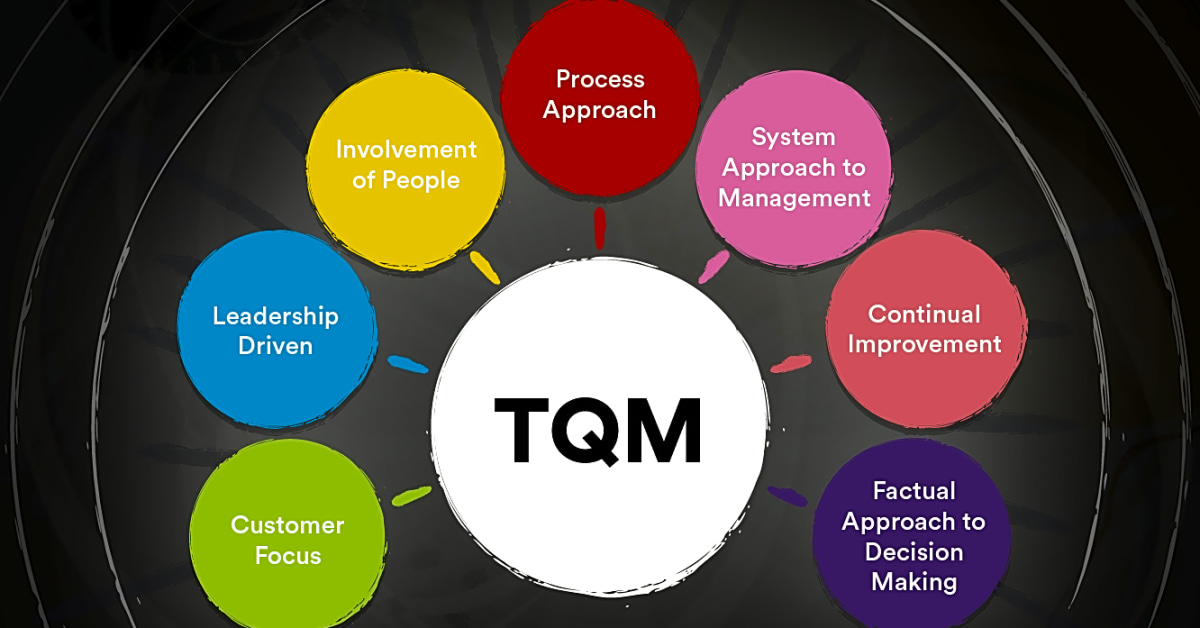Are you looking to improve the quality of your operations? Look no further than implementing quality control methods and tools. In today’s fast-paced business world, it is crucial to have effective operational leadership that can ensure the highest levels of quality in your processes. Quality control methods and tools are essential for businesses of all sizes and industries, helping to identify and address any issues or inefficiencies that may arise. In this article, we will dive into the strategies for implementing quality control methods and tools, as well as the benefits they can bring to your organization. Whether you are new to quality control or looking to enhance your current practices, this article will provide valuable insights and tips to help you succeed. So let’s get started on the journey towards achieving optimal process improvement and quality assurance.
Are you looking for ways to become a more effective leader in your business operations? Do you want to improve organizational efficiency and performance through problem solving and decision making? Look no further! In this article, we will cover all you need to know about implementing quality control methods and tools, tailored specifically for those interested in operational leadership and process improvement.
Operational leadership plays a crucial role in the success of any organization. It involves managing and directing the operations of a company to achieve its goals and objectives. Effective operational leadership not only ensures smooth functioning of processes but also fosters a positive work culture and promotes employee engagement.
To be an effective operational leader, one must possess strong management skills. This includes clear communication, delegation, and conflict resolution. Effective communication ensures that all team members are on the same page and have a clear understanding of their roles and responsibilities. Delegation allows for efficient distribution of tasks and encourages team members to take ownership. Conflict resolution is essential in maintaining a harmonious work environment and resolving conflicts in a timely and effective manner.
Problem solving and decision making are also crucial aspects of operational leadership. Leaders must be able to identify issues and implement solutions effectively. Root cause analysis, the 5 Whys method, and SWOT analysis are some of the popular approaches used in problem solving. These techniques help identify the underlying cause of a problem and find the most effective solution.
A culture of continuous improvement is essential for any organization to stay competitive. As an operational leader, it is important to foster this culture within your team. Encourage employees to share their ideas for improvement and provide opportunities for training and development.
Quality control methods and tools play a vital role in ensuring consistency, reliability, and efficiency in processes. Six Sigma, Lean, and Total Quality Management (TQM) are some of the popular tools used for quality control. These tools have been successfully implemented in organizations across different industries, resulting in significant improvements in quality, productivity, and customer satisfaction.
Data-driven decision making is becoming increasingly important in today’s business world. Quality control methods and tools can help collect and analyze data to identify areas for improvement. The use of technology, such as data analytics and automation, can further enhance the effectiveness of these methods.
Implementing quality control methods and tools in your organization requires proper planning and execution. This includes identifying areas for improvement, creating a plan, training employees, and monitoring progress. It is important to address any challenges that may arise and ensure the successful implementation of these methods and tools.
In conclusion, operational leadership, process improvement, and quality control methods and tools are essential for achieving success in any organization. As a leader, it is your responsibility to continuously strive for improvement and drive positive change within your team and organization. By following the strategies and techniques discussed in this article, you will be on your way to becoming a more effective leader and achieving better results in your operations.
Quality Control Methods and Tools
Quality control is an essential aspect of any business operation, as it ensures consistency, reliability, and efficiency in processes. It involves monitoring and evaluating processes to identify any potential errors or defects, and implementing solutions to prevent them from occurring again. In this article, we will discuss some key methods and tools that can help you effectively implement quality control in your organization.
Strategies for Effective Management and Team Building
Clear communication, delegation, and conflict resolution are essential skills for effective management and team building. As a leader, it is important to be able to clearly communicate expectations, goals, and responsibilities to your team. This can help avoid misunderstandings and ensure that everyone is on the same page.
Delegation is another key strategy for effective management. It involves assigning tasks and responsibilities to team members in a way that maximizes their strengths and talents. This not only helps to increase efficiency and productivity, but it also shows trust and confidence in your team.
Conflict resolution is another important aspect of effective management. As a leader, you will likely encounter conflicts among team members or with clients. It is important to address these conflicts in a timely and professional manner to maintain a positive work environment and ensure that tasks are completed efficiently.
The Importance of Operational Leadership
Operational leadership plays a crucial role in the success of any organization. It involves overseeing and managing the day-to-day operations, ensuring that processes and procedures are carried out efficiently and effectively. But what sets great operational leaders apart is their ability to inspire and motivate their teams to achieve excellence.
Effective leadership has a significant impact on organizational success. It drives employee engagement and fosters a positive work culture, which leads to higher productivity and better performance. It also promotes problem-solving and decision-making skills, which are essential in implementing quality control methods and tools.
Moreover, operational leaders are responsible for setting the tone for quality control and assurance within the organization. They establish the standards and expectations for quality, and they must lead by example in adhering to these standards. When operational leaders prioritize quality, their teams will follow suit, resulting in improved processes, reduced errors, and increased customer satisfaction.
Overall, operational leadership is vital in driving process improvement and quality control within an organization. It sets the tone for the entire team and plays a crucial role in achieving organizational goals and success.
Problem Solving and Decision Making
When it comes to operational leadership, problem solving and decision making are two crucial skills that can greatly impact the success of your business. In order to effectively implement quality control methods and tools, it is important to have a strong understanding of problem solving and decision making processes.
There are various approaches to identifying and solving problems, and it is important to explore different methods in order to find what works best for your organization. One approach is the Six Sigma methodology, which focuses on data-driven decision making and problem solving through a structured process. Another approach is the Plan-Do-Check-Act (PDCA) cycle, which involves continuous improvement through problem identification, solution implementation, and evaluation.
It is also important to involve a diverse team when addressing problems in order to gain different perspectives and ideas. This can lead to more effective decision making and problem solving. Additionally, using tools such as root cause analysis, brainstorming sessions, and fishbone diagrams can help identify the underlying causes of problems and generate potential solutions.
By exploring different approaches to problem solving and decision making, you can improve your leadership skills and effectively implement quality control methods and tools for process improvement. Remember to always prioritize data-driven decision making and involve your team in the problem-solving process for the best results.
Fostering a Culture of Continuous Improvement
In order to successfully implement quality control methods and tools, it is important to foster a culture of continuous improvement within your organization. This means creating an environment where employees are encouraged and empowered to constantly seek out ways to improve processes and procedures.
One key tip for promoting this type of culture is to regularly communicate the importance of continuous improvement to your team. This can be done through team meetings, emails, or even posters around the workplace. By emphasizing the value of constantly striving for improvement, employees will be more likely to actively engage in the process.
Another helpful strategy is to provide training and resources for employees to learn about quality control methods and how they can contribute to continuous improvement. This can include workshops, online courses, or even mentorship programs where more experienced employees can share their knowledge and skills with others.
It is also important to recognize and reward employees who actively participate in continuous improvement efforts. This can be done through bonuses, promotions, or simply acknowledging their contributions in team meetings. By showing appreciation for their efforts, employees will feel motivated to continue seeking out ways to improve.
Lastly, as a leader, it is crucial to lead by example and actively participate in continuous improvement initiatives yourself. This will show employees that you are committed to the process and can also provide valuable insights and ideas from your perspective.
Implementing Quality Control Methods and Tools
Are you struggling with managing quality control in your organization? Do you want to improve your operational leadership and decision making skills? Look no further! In this article, we will cover all the key steps you need to know about implementing quality control methods and tools. By the end, you will have a better understanding of how to successfully improve your processes and ensure quality in your organization.
Step 1: Identify the areas that need improvement
The first step in implementing quality control methods and tools is identifying the areas that need improvement. This could be anything from product defects to inefficient processes. By pinpointing the problem areas, you can focus your efforts on finding the right solutions.
Step 2: Choose the right tools for your organization
Once you have identified the areas that need improvement, it’s time to choose the right tools for your organization. This could include statistical process control, Six Sigma methodology, or lean management techniques. It’s important to select tools that align with your business goals and resources.
Step 3: Train and educate your team
Implementing quality control methods and tools requires proper training and education for your team. They need to understand the tools and techniques being implemented and how to use them effectively. This will ensure consistency and efficiency in your processes.
Step 4: Implement and monitor
Now that you have identified the problem areas, selected the right tools, and trained your team, it’s time to implement and monitor the changes. This involves setting up processes and systems to track progress and identify any new issues that may arise.
Step 5: Continuously improve
Quality control is an ongoing process, and it’s important to continuously improve and adapt as needed. This could involve collecting feedback from customers, analyzing data, and making necessary adjustments to your processes.
In conclusion, implementing quality control methods and tools is essential for effective operational leadership and process improvement. By utilizing the strategies and techniques discussed in this article, you can become a better leader, improve organizational efficiency and performance, and foster a culture of continuous improvement within your organization. Remember to always collect and analyze data, utilize technology, and monitor progress to ensure successful implementation. With dedication and perseverance, you can achieve significant improvements in quality and productivity, leading to greater customer satisfaction and overall success for your organization.







